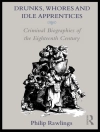In ‘The Inner Sisterhood, ‘ Douglass Sherley crafts a poignant exploration of female identity and solidarity through a blend of lyrical prose and rich imagery. Set against the backdrop of a tightly-knit community, the narrative intricately weaves together the lives of its female characters, each navigating the complexities of their relationships and societal expectations. Sherley’s stylistic choices reflect the influences of contemporary feminist literature, as he employs an introspective and empathetic voice that invites readers to engage deeply with the characters’ psychic landscapes, emphasizing the power of sisterhood as both a source of strength and a catalyst for personal transformation. Douglass Sherley, an acclaimed author known for his insightful portrayals of marginalized voices, draws upon his own experiences within diverse communities to shape the narrative of ‘The Inner Sisterhood.’ His background as a social advocate and educator informs his commitment to portraying the intricacies of women’s lives, particularly in spaces often overlooked by mainstream literature. Sherley’s dedication to exploring themes of resilience and connection reflects his belief in storytelling as a means of fostering understanding and empathy. For readers seeking an evocative journey into the depth of women’s experiences, ‘The Inner Sisterhood’ offers a powerful and thought-provoking narrative. Sherley’s adept storytelling not only captivates but also challenges readers to reflect on their own connections and the impact of collective identities. This is a vital addition to contemporary literary discourse, promising to resonate with anyone interested in the profound dynamics of sisterhood.
关于作者
Douglass Sherley was an American author who hailed from a lineage that prided literary and creative contribution. Born in the mid-19th century into the distinguished Sherley family in Louisville, Kentucky, he imbibed the southern culture, which subtly influenced his writing style. His contributions to the literary world, although not voluminous, carry a weight that reflects the depth of his insights into human relationships and societal structures, deftly captured in his most well-known work, ‘The Inner Sisterhood’ (1898). This particular book offers a lens into the complex dynamics of female camaraderie, internal conflicts, and the pursuit of personal identity, eloquently wrapped in the prose of the times. Sherley’s literary methods employed a nuanced approach to character development and storytelling that were often marked by a quietly stirring quality along with a dash of psychological acuity. His writings mirrored his personal life’s highs and lows and the genteel society in which he was ensconced. Though his name may not be as widely recognized as some of his contemporaries, Sherley’s literary contributions add a unique brushstroke to the canvas of American Southern literature in the postbellum era. His distinct style has been the subject of critical study and appreciation among scholars interested in the Reconstruction period and the literary responses to the rapidly changing social, cultural, and political landscapes of the South.












